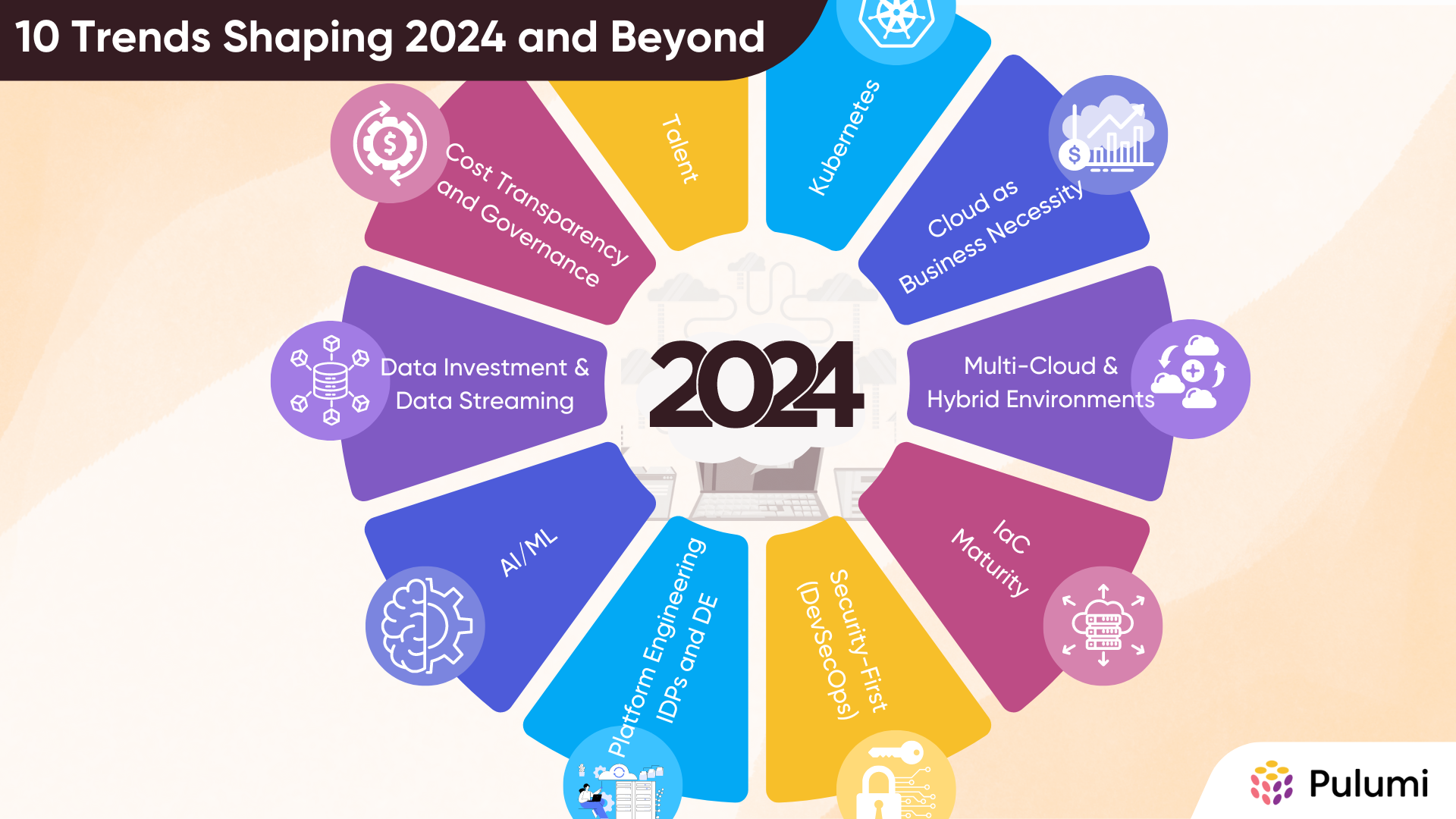Future of the Cloud: 10 Trends Shaping 2024 and Beyond

In 2024, several trends will dominate cloud computing, driving innovation, efficiency, and scalability. From Infrastructure as Code (IaC) to AI/ML, platform engineering to multi-cloud and hybrid strategies, and security practices, let’s explore the 10 biggest emerging trends.




